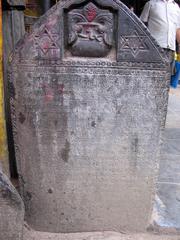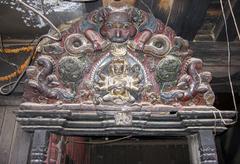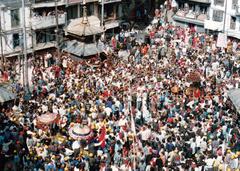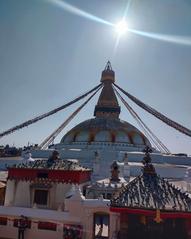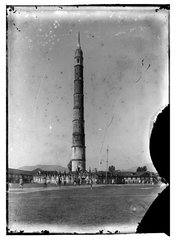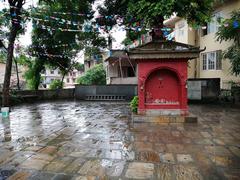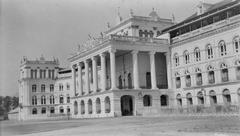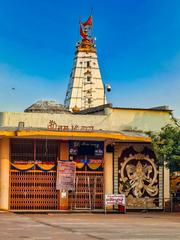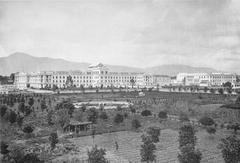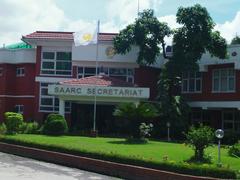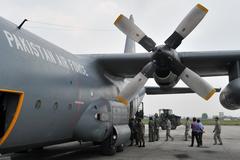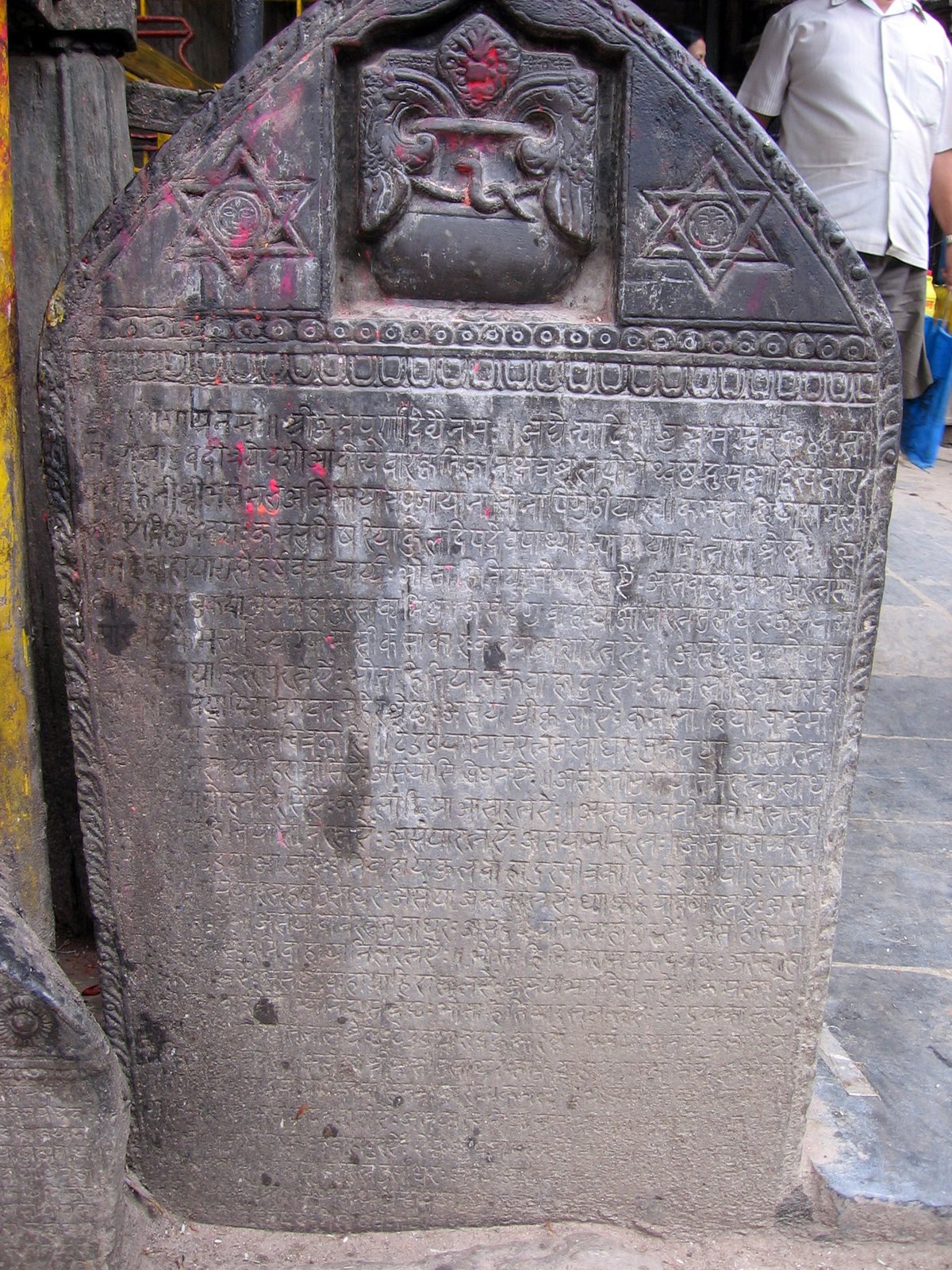
Visiting Asan, Kathmandu, Nepal: Comprehensive Guide with Visiting Hours, Tickets, and Nearby Attractions
Date: 15/06/2025
Introduction
Nestled in the vibrant heart of Kathmandu, Asan (also known as Ason or Asan Tole) stands as one of Nepal’s oldest and most culturally rich marketplaces. This historic square, where six major streets converge, has served as a crucial commercial and spiritual hub for centuries, bridging ancient trade routes and fostering a dynamic blend of commerce, ritual, and community life. Asan’s enduring significance is evident in its iconic Newari architecture, sacred temples such as the Annapurna Ajima Temple, and the vibrant customs maintained by the indigenous Newar community.
This guide offers a detailed exploration of Asan’s origins, development, and living traditions, along with practical visitor information on opening hours, tickets, accessibility, travel tips, and nearby Kathmandu historical sites. Whether you are drawn by the market’s bustling atmosphere, its religious landmarks, or its rich tapestry of festivals and local heritage, Asan presents an immersive window into the soul of Kathmandu.
Table of Contents
- Introduction
- Origins and Historical Development
- Asan’s Role in Ancient Trade Routes
- Architectural and Religious Heritage
- Festivals and Cultural Life
- Market Experience: Goods, Food, and Shopping Tips
- Visiting Asan: Hours, Tickets, and Travel Advice
- Accessibility and Practical Considerations
- Nearby Attractions
- Frequently Asked Questions (FAQ)
- Conclusion and Call to Action
- References
Origins and Historical Development
Asan’s roots stretch back to legends predating the Lichhavi era (3rd–9th centuries CE). According to local lore, a rice merchant from Bhaktapur started selling rice where his sack stuck to the ground, attracting other traders and gradually transforming the area into a thriving market. The Annapurna Temple, dedicated to the goddess of abundance, was later erected on this site, symbolizing the intersection of commerce and spirituality that continues to define Asan (DC Nepal, Responsible Nepal Tours).
During the Lichhavi and Malla periods, Asan became integral to Kathmandu’s economic and cultural landscape. The Malla kings, patrons of art and architecture, endowed the area with temples and intricately carved Newari houses, much of which still survive today (Plan Holidays).
Asan’s Role in Ancient Trade Routes
Strategically located at the confluence of major streets, Asan was a pivotal point on the ancient trade route between India and Tibet. This position allowed Asan to flourish as a commercial hub, bringing together traders, pilgrims, and artisans. The market became known for its diversity, offering spices, textiles, bullion, and a lively exchange of ideas and traditions (Responsible Nepal Tours).
Architectural and Religious Heritage
Annapurna Ajima Temple
Dominating the square, the Annapurna Ajima Temple is dedicated to the goddess of food and abundance. Built in the early 19th century, it remains a focal point of worship and community gatherings, symbolizing Asan’s historical role as Kathmandu’s granary (IMNepal).
Ganesh and Krishna Temples
The Ganesh Shrine, located on the northern side of the square, is revered as a protector and remover of obstacles (Shree Ganesh). Nearby, the Krishna Temple features exquisite woodwork and is popular among devotees and photographers.
Buddhist Bahas
Around Asan are several Buddhist monastic courtyards (bahas), including Takse, Kwathu, Haku, Dhalasikwa, Dagu, Asan, and Hwakha Baha. These serve as centers for Buddhist learning and meditation, reflecting the deep-rooted syncretism of Hindu and Buddhist traditions in Kathmandu (IMNepal).
Festivals and Cultural Life
Asan is renowned for its vibrant festival calendar, many of which are unique to the Newar community:
- Dashain and Tihar: Major Hindu festivals celebrated with music, rituals, and decorations.
- Indra Jatra: The square becomes a focal point for processions and performances.
- Seto Machhindranath Jatra: An important chariot procession attracting crowds from across the valley (Wikipedia).
- Gunla Bajan: A Buddhist musical pilgrimage during the holy month of Gunla.
- Mha Puja: The Newar self-purification ritual held during Tihar, marked by music and oil lamps.
These events showcase Asan’s role as a living museum of Newar culture, where music, dance, and ritual fill the air and reinforce community bonds (Wikipedia, IMNepal).
Market Experience: Goods, Food, and Shopping Tips
Traditional Goods and Shopping
Asan remains a bustling bazaar where locals and visitors shop for:
- Spices, Grains, and Fresh Produce: Aromatic stalls featuring chilies, turmeric, ginger, lentils, and seasonal fruits.
- Textiles and Handicrafts: Traditional Nepali fabrics, brassware, and ritual items, many made by local artisans (Inside Himalayas).
- Household Goods: Kitchenware, utensils, and daily necessities.
Bargaining is customary; start with a lower offer and negotiate politely (Nepal Database). Carry cash, as most transactions are cash-based.
Street Food and Culinary Experiences
Asan is a paradise for food lovers:
- Popular snacks: Momos (dumplings), samosas, sel roti (rice bread), chatamari (rice crepes), and sweet tea or lassi.
- Cooking classes: Some operators offer tours beginning with a market visit followed by hands-on Nepali cooking lessons (TravelSetu).
Visiting Asan: Hours, Tickets, and Travel Advice
- Market Hours: Generally open from 6:00 AM to 9:00 PM; best visited early morning or late afternoon for a lively yet manageable experience (Never Ending Footsteps).
- Temple Hours: Most temples open from 6:00 AM to 7:00 PM.
- Tickets: Entry to Asan and its temples is free; donations are appreciated for temple upkeep.
- Guided Tours: Available from local operators and highly recommended for deeper cultural insights.
Accessibility and Practical Considerations
- Location: Asan is centrally located, a 10–15 minute walk from Thamel, Kathmandu Durbar Square, and Indra Chowk (Nepal Traveller).
- Navigation: The area features narrow, uneven stone-paved lanes. Wear comfortable shoes and keep valuables secure.
- Accessibility: The main square is relatively accessible, but many alleys and temple entrances have steps or uneven surfaces, posing challenges for those with mobility impairments.
- Facilities: Public restrooms are limited; use facilities in nearby cafes or hotels. ATMs are found in Thamel and New Road.
- Health: Drink only bottled or filtered water. Eat at busy stalls for fresher food. Carry hand sanitizer.
- Language: Nepali is widely spoken, but many vendors understand basic English. Simple greetings like “Namaste” are appreciated (Tourist Secrets).
Nearby Attractions
Asan’s location makes it an ideal base for exploring:
- Kathmandu Durbar Square: UNESCO World Heritage Site with palaces and temples.
- Indra Chowk: Another historic market with traditional shops.
- Thamel: Kathmandu’s tourist hub, with cafes, shops, and hotels.
- Seto Machhindranath Temple: Revered by both Hindus and Buddhists, just a short walk from Asan (Quality Days).
- Kasthamandap: Legendary wooden shelter and namesake of Kathmandu (HopNepal).
Frequently Asked Questions (FAQ)
What are Asan’s visiting hours?
The market and shops are generally open from 6:00 AM to 9:00 PM; temples from 6:00 AM to 7:00 PM. The square itself is accessible at all hours.
Is there an entry fee for Asan or its temples?
No, Asan is free to visit; donations at temples are voluntary.
How do I reach Asan from Thamel or the airport?
It’s a 10–15 minute walk from Thamel; taxis and rickshaws are available. From Tribhuvan International Airport, Asan is about 6 km by taxi.
Are guided tours available?
Yes, several local operators offer walking tours focusing on Asan’s history, culture, and cuisine.
Is Asan accessible for differently-abled visitors?
Accessibility is limited due to narrow and uneven pathways. The main square is more accessible than the surrounding alleys.
Can I take photographs?
Yes, but always ask permission before photographing people or ceremonies, especially inside temples.
Conclusion and Call to Action
Asan stands as a living testament to Kathmandu’s centuries-old traditions, where commerce, religion, and community coalesce in a vibrant urban tapestry. Its architectural gems, bustling market, and lively festivals offer travelers an authentic glimpse into Nepali life. With free public access, convenient hours, and a wealth of cultural attractions nearby, Asan is an essential stop on any Kathmandu itinerary.
To maximize your visit, consider joining a guided tour, participate respectfully in local customs, and explore Asan’s maze-like lanes and hidden courtyards. For up-to-date information, interactive maps, and self-guided tours, download the Audiala app. Stay connected with us on social media for the latest updates and travel inspiration.
Plan your journey to Asan today for an unforgettable immersion into the heart of Kathmandu’s living heritage.
References
- Fascinating Story of Kathmandu’s Oldest Market with Photos – DC Nepal
- Asan Bazar – Responsible Nepal Tours
- What to Do and See in Asan – Plan Holidays
- Ason Chowk, Kathmandu – The Longest Way Home
- Asan Tole Kathmandu Nepal – IMNepal
- Asan, Kathmandu – Wikipedia
- Exploring Asan, Kathmandu – Audiala
- The Vibrant Charm of Asan Bazaar – Nepal Traveller
- Top Shopping Markets Kathmandu – Nepal Database
- Dos and Don’ts While Visiting Nepal: A Comprehensive Guide – The Nepal Journal
- Endless Journey – Asan Tole
- Top Nepal – Asan
- Nomadasaurus – Best Places to Visit in Kathmandu
- Quality Days – Top 15 Things to Do in Kathmandu
- HopNepal – Best Natural and Must-See Places to Visit and Hangout in Kathmandu
- TravelSetu – Things to Do in Asan
- Shree Ganesh – Asan Ganesh Temple
- Never Ending Footsteps – Things to Do Kathmandu
- Inside Himalayas – Traditional Shops of Asan Tole
- Nepal Traveller – The Vibrant Charm of Asan Bazaar
- NTB – Asan
- Tourist Secrets – Everything You Need to Know Before You Go to Kathmandu
